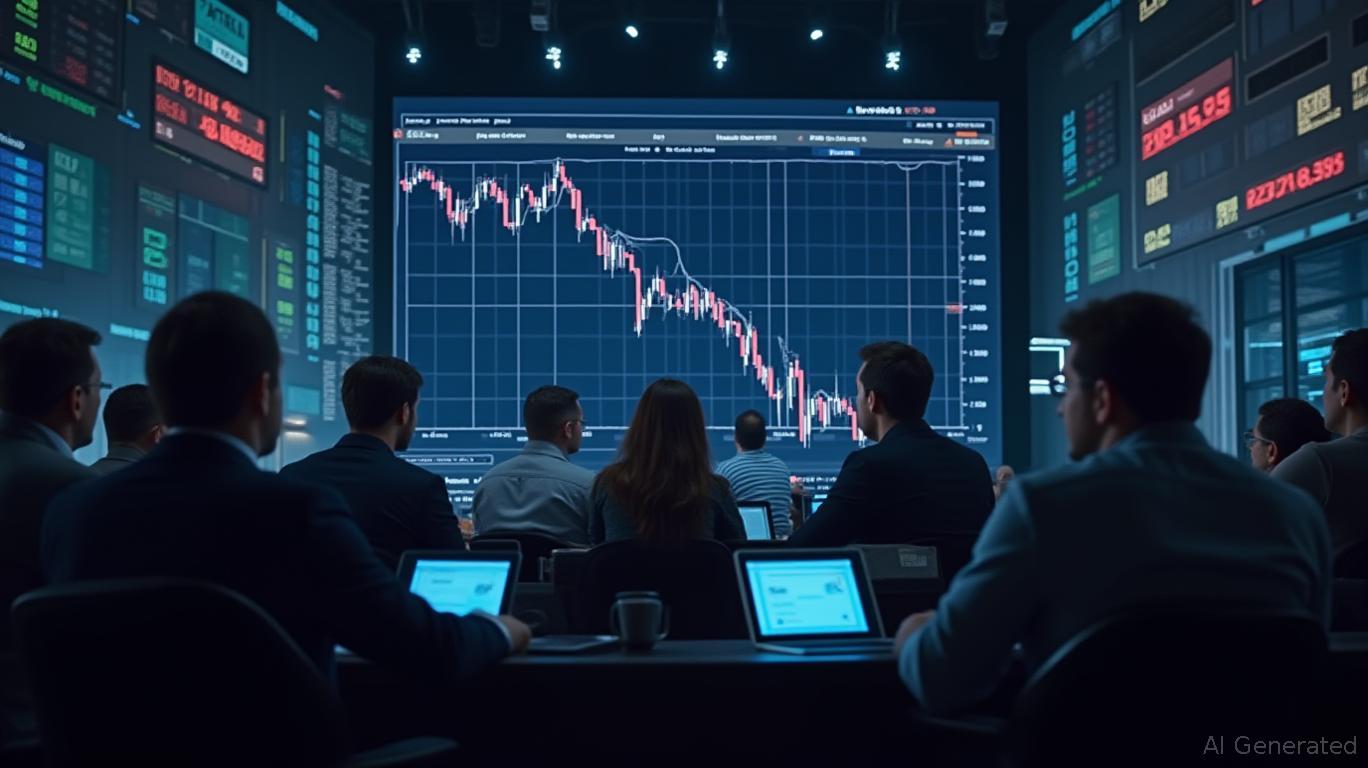The Fed's Delicate Balance: Navigating Trade Uncertainty and Yield Curve Risks in Fixed-Income Markets
The Federal Reserve's decision to hold the federal funds rate steady at 4.25%-4.5% in June 2025 underscores a pivotal moment for investors. Amid rising trade policy uncertainty and simmering geopolitical tensions, the Fed's cautious stance has set the stage for a nuanced fixed-income landscape. This article dissects the implications of the Fed's rate standstill, the inflation risks stemming from trade dynamics, and the resulting yield curve dynamics, while identifying high-conviction opportunities in fixed-income markets.
The Fed's Caution: A Data-Driven Pause
The Fed's decision reflects a delicate balancing act between stabilizing inflation and avoiding a sharper economic slowdown. While the median projection calls for two rate cuts by year-end, internal dissent—now at 37% of FOMC participants—highlights the fragility of this outlook. The central bank's revised GDP growth forecast of 1.4% in 2025 (down from 1.7% in March) signals concern over trade-related headwinds, particularly the highest tariffs in nearly a century, which risk reigniting inflationary pressures.

The Fed's dovish bias is further complicated by the foreign-born workforce shrinking by 1 million in two months, tightening labor markets and raising wage pressures. Fed Governor Adriana Kugler's warning about inflation risks in sectors like agriculture and construction adds urgency to the Fed's inflation-fighting mandate, even as bond yields rise.
Trade Policy: The Wildcard in Inflation Dynamics
While tariffs have yet to meaningfully boost inflation—likely due to delayed impacts and soft demand—the Fed's projections now assume 3.0% headline PCE inflation in 2025, up from 2.7% in March. This reflects heightened uncertainty about how trade negotiations will unfold. President Trump's aggressive criticism of the Fed (“stupid,” “numbskull”) underscores political pressures that could disrupt policy independence.
Investors must remain vigilant to two key risks:
1. Tariff-Driven Inflation Surge: If trade negotiations falter, tariffs could finally translate into higher consumer prices, forcing the Fed to delay cuts or even raise rates.
2. Geopolitical Volatility: The Israel-Iran conflict has already pushed oil prices higher, with gasoline costs threatening to erode consumer spending.
Yield Curve Dynamics: A Flattening Outlook
The bond market is pricing in a flattening yield curve, with the spread between 10-year and 2-year Treasury yields narrowing to just 20 basis points (from 60 bps in early 2025). This reflects skepticism about the Fed's ability to achieve both low unemployment and 2% inflation.
A persistent flat or inverted curve signals investors anticipate slower growth ahead. For fixed-income portfolios, this creates opportunities in sectors insulated from rate cuts, such as high-quality corporate bonds and inflation-protected securities (TIPS).
Strategic Investment Plays for Fixed-Income Investors
- High-Quality Corporate Bonds:
- Why? With the Fed's balance sheet normalization reducing Treasury liquidity, demand for investment-grade corporates (BBB+ and above) remains strong. Their yield premiums over Treasuries—currently 120-150 bps—offer compensation for credit risk while benefiting from falling default rates in stable sectors like utilities and healthcare.
Example: Overweighting ETFs like SPDR Barclays Investment Grade Corporate Bond ETF (LQD).
Inflation-Protected Securities (TIPS):
- Why? Core PCE inflation at 3.1% suggests nominal bonds face erosion of real returns. TIPS' principal adjustments for inflation make them a hedge against the Fed's delayed response to trade-driven price pressures.
Example: The iShares TIPS Bond ETF (TIP) offers exposure to TIPS with a duration of ~6.5 years.
Short-Term Municipal Bonds:
- Why? State and local governments benefit from stable tax revenues and low default risk. Short-duration munis (1-3 years) offer tax-free yields competitive with Treasuries, while avoiding duration risk as the Fed holds rates.
Example: The SPDR Nuveen Municipal Bond ETF (TFI) yields ~3.5% (tax-equivalent ~5.5% for high-income taxpayers).
Utilities and Telecom Sector Bonds:
- Why? These sectors are less exposed to trade wars and benefit from stable cash flows. Utilities' BBB-rated debt yields ~4.2%, offering a buffer against inflation while avoiding equity volatility.
- Example: The Utilities Select Sector SPDR Fund (XLU) holds corporate bonds of regulated firms like NextEra Energy and AT&T.
Risks and Contingency Plans
- Stagflation Risk: If GDP growth stays below 2% while inflation remains above 3%, investors should shift toward shorter-duration bonds or floating-rate notes.
- Geopolitical Shock: A Middle East conflict spiking oil prices could force a Fed pivot. Positioning with oil-linked ETFs (USL) or gold-backed bonds (GLD) adds diversification.
Conclusion: Patience and Precision
The Fed's rate standstill and trade policy uncertainty have created a fixed-income market ripe with opportunity—but only for investors willing to parse granular data and balance risks. By focusing on high-quality corporates, TIPS, and sector-specific munis, portfolios can navigate the flattening yield curve while hedging against inflation. As the Fed's dot plot suggests two cuts by year-end, patience is key: avoid overreacting to geopolitical noise, and prioritize duration management to capitalize on the Fed's eventual easing.
Investment advice: Maintain a laddered bond portfolio with an emphasis on short-to-intermediate maturities, and consider adding 10-15% in TIPS to hedge against trade-driven inflation surprises.

Comments
No comments yet